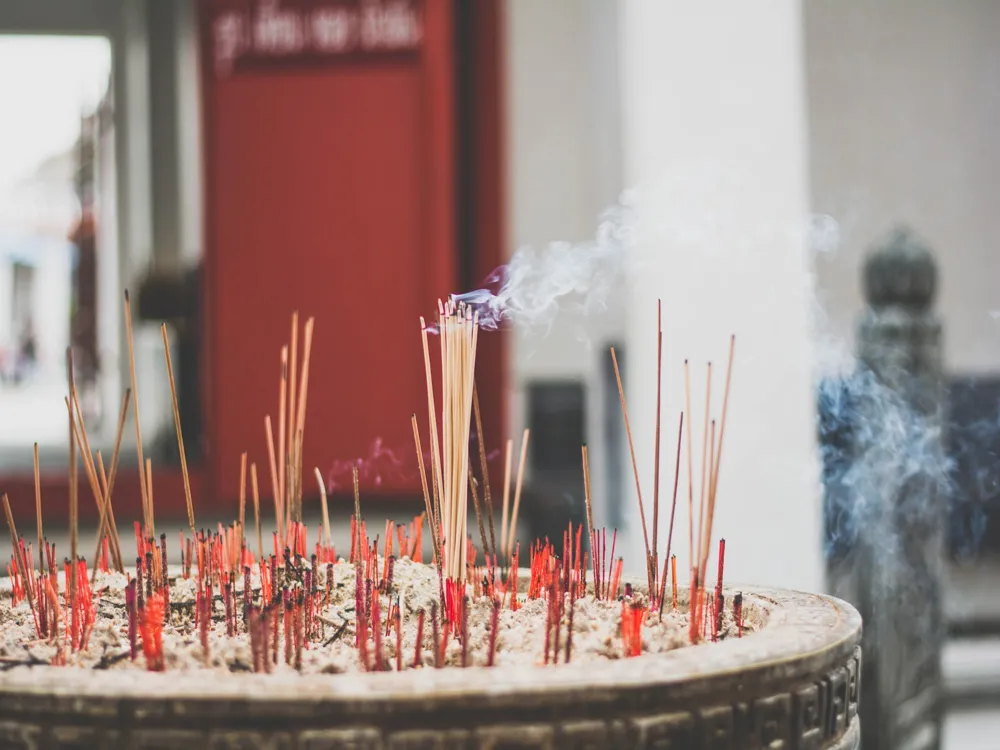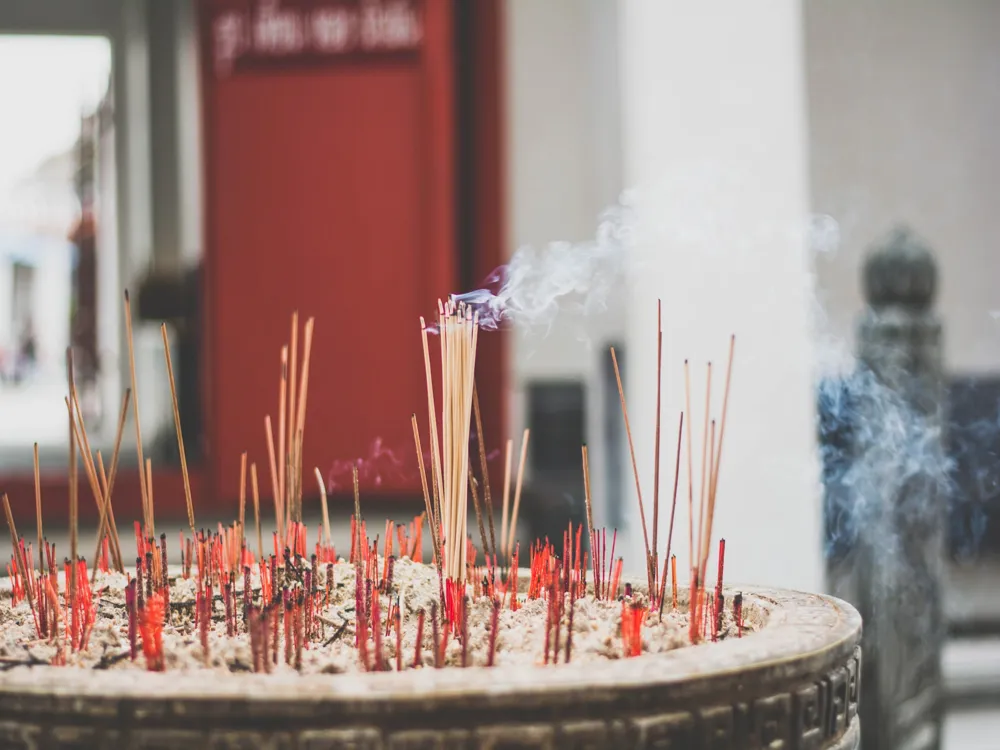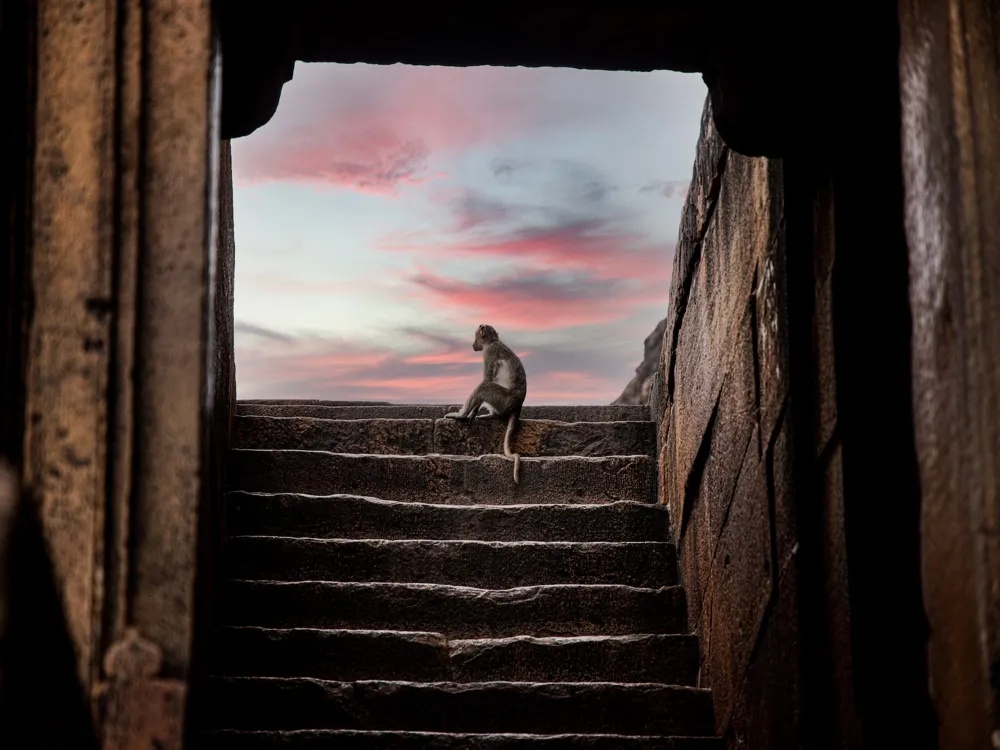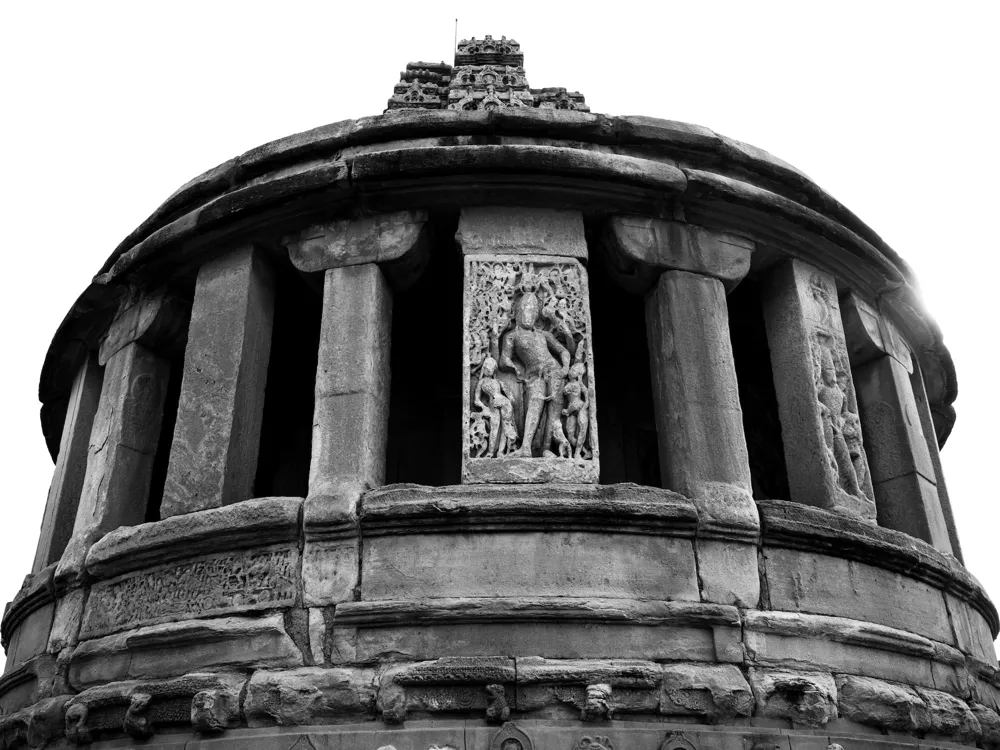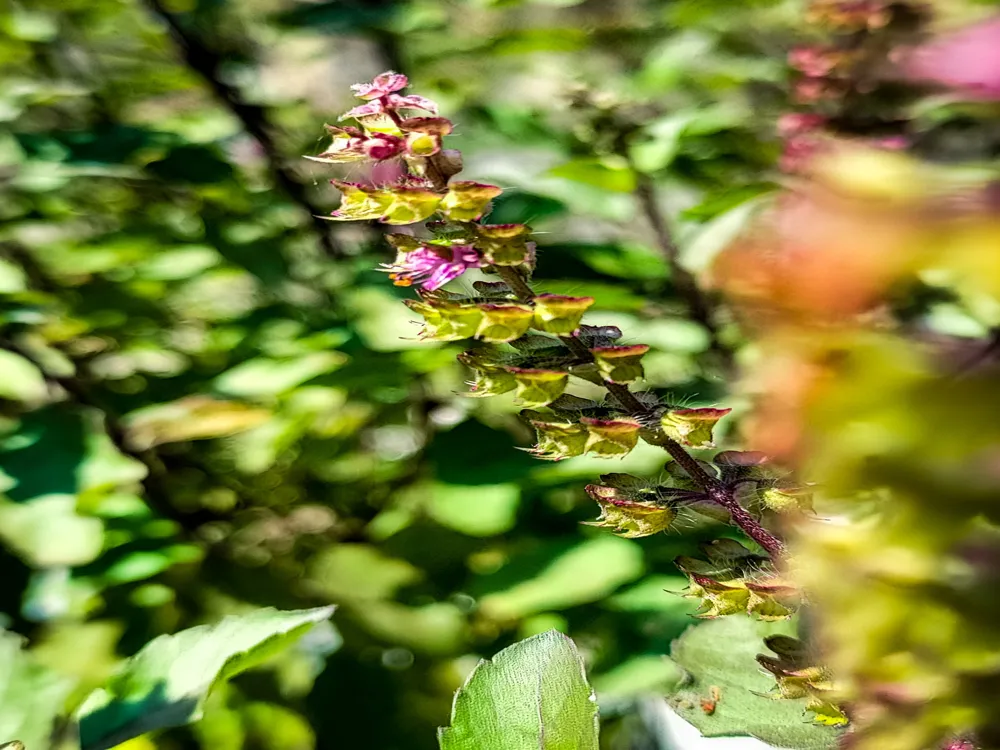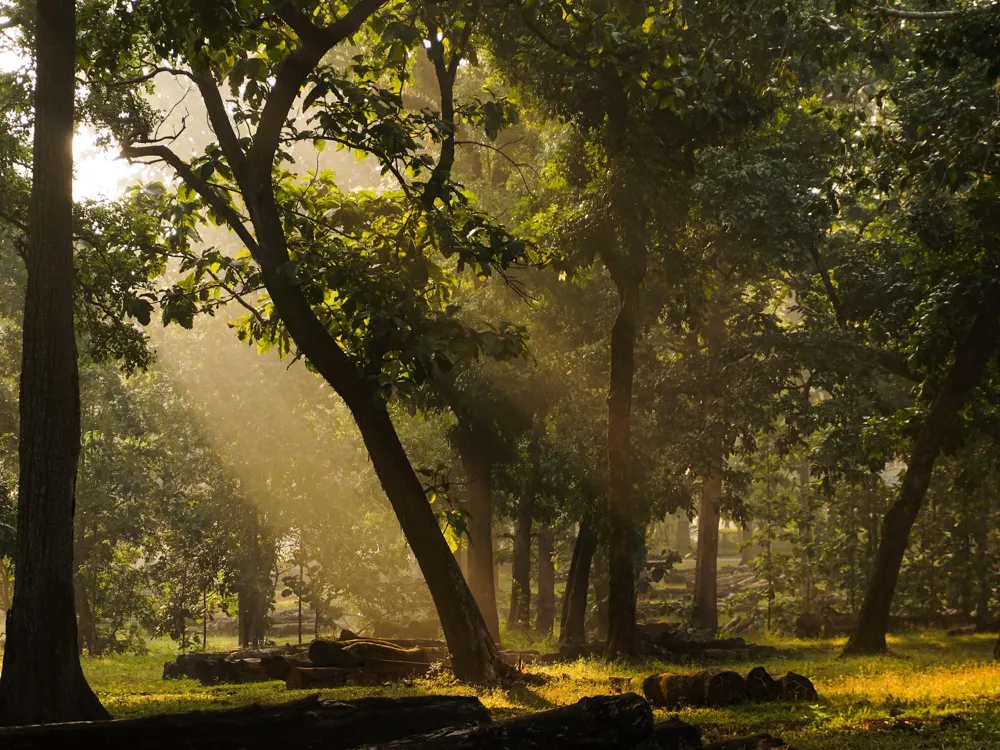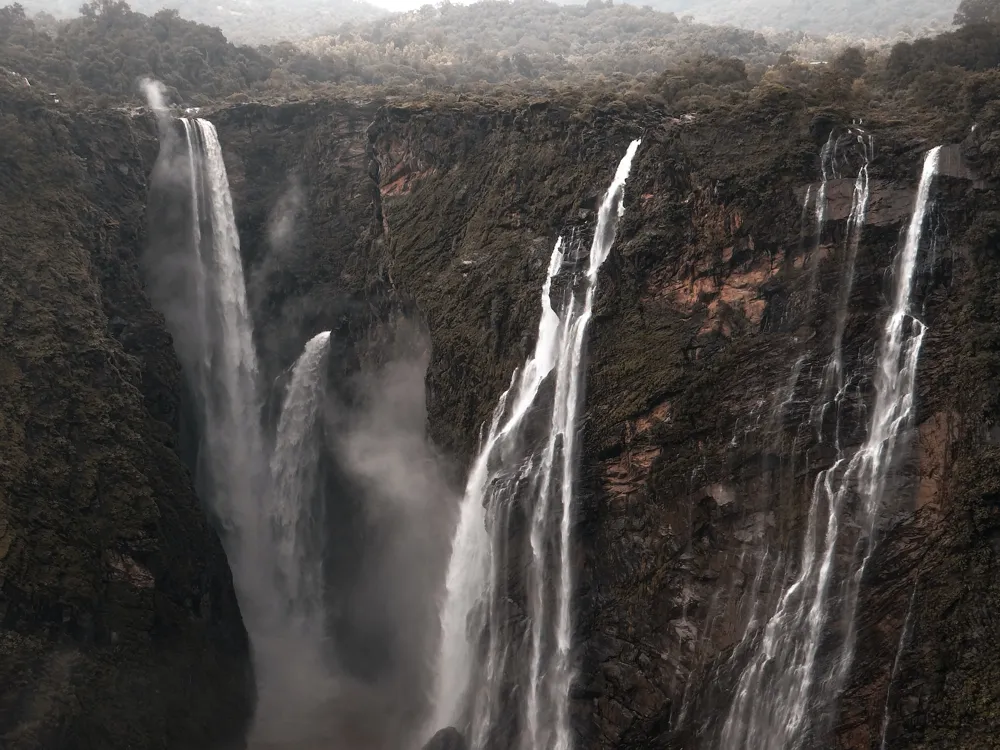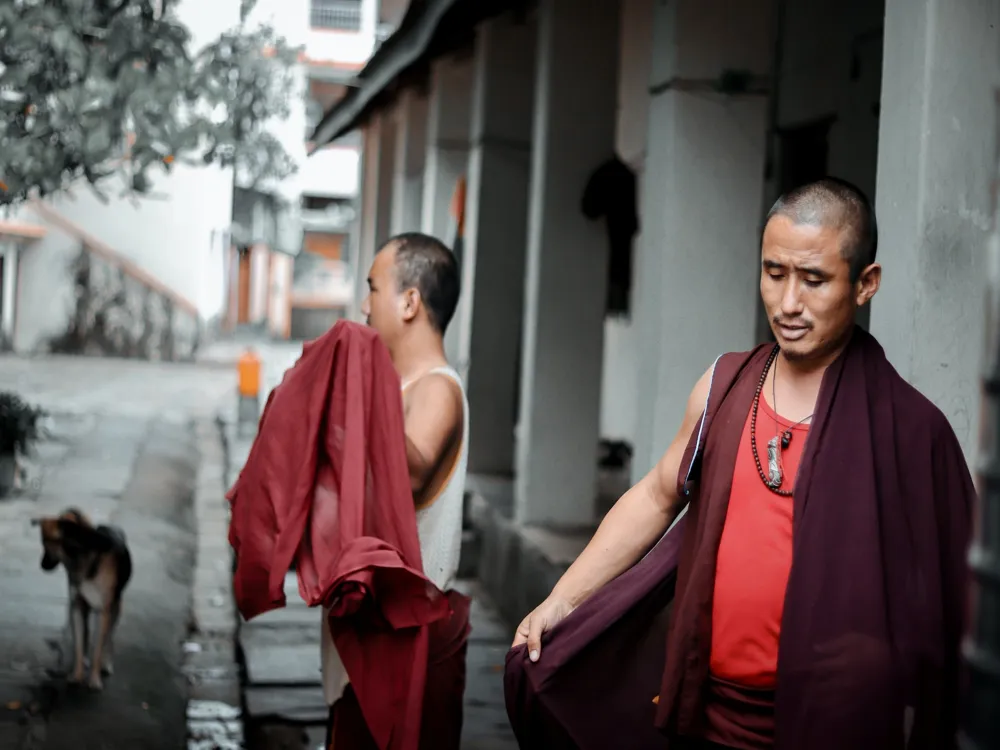Virupaksha Temple, situated in the UNESCO World Heritage site of Pattadakal in Karnataka, India, stands as a remarkable testament to the architectural ingenuity of the Chalukya dynasty. Dating back to the 7th and 8th centuries, this temple complex showcases an exquisite fusion of Northern and Southern Indian architectural styles, known as the Vesara style. It was built by Queen Lokamahadevi to commemorate her husband's victory over the kings from the South. This temple not only symbolizes a historical triumph but also represents a confluence of religious and cultural ethos. The temple's architecture is a mirror to the rich cultural heritage of that era. Intricately carved sculptures, detailed friezes depicting Hindu mythology, and a plethora of inscriptions in ancient scripts adorn the walls of this magnificent structure. The temple complex comprises several small shrines, mandapas (pillared halls), and a large central temple dedicated to Lord Virupaksha, an incarnation of Lord Shiva. The harmony of intricate stonework and the well-thought-out design reflects the advanced state of art and architecture under the patronage of the Chalukyas. The Virupaksha Temple is not just an architectural marvel but also a living cultural site where daily worship and annual festivals breathe life into its ancient stones. Visitors are transported back in time as they walk through the grand processional paths leading to the sanctum. The temple's towering gateway, the gopuram, serves as a grand entrance, beckoning pilgrims and tourists alike to witness the glory of a bygone era. The architecture of Virupaksha Temple is a magnificent example of the Chalukyan style, which harmoniously blends the Dravidian (Southern) and the Nagara (Northern) architectural forms. The temple, sprawling over a substantial area, exhibits a sophisticated understanding of geometry and spatial arrangement. The main sanctum (garbhagriha) houses a Shiva lingam and is connected to an intricately carved antechamber (antarala). One of the striking features of this temple is its large, multi-faceted columns, which are adorned with detailed sculptures narrating episodes from Hindu epics. The temple's exterior walls are replete with a series of intricately carved sculptures and friezes. These carvings depict scenes from Hindu mythology, including the Ramayana, the Mahabharata, and the Puranas, showcasing the artistry and craftsmanship of the Chalukyan artisans. The temple’s vimana (tower over the sanctum) is a splendid structure, showcasing the fusion of the Dravidian and Nagara styles. The vimana is crowned by a large amalaka (ribbed, circular stone) and a kalasha (pot-like finial), characteristic of Hindu temple architecture. The temple complex also includes a series of smaller shrines and halls, including a remarkable Nandi pavilion housing a large, monolithic statue of Nandi (the bull mount of Lord Shiva). The mandapas (pillared halls) in the complex are noted for their large pillars with intricate carvings. These halls served as spaces for gatherings, religious discourses, and cultural events. The Kalyana Mandapa, a notable feature, was used for ceremonial marriage rituals dedicated to the deities. As a sacred site, it's important to dress modestly and remove footwear before entering the temple premises. Photography may be restricted in certain areas, so it's advisable to check with the temple authorities beforehand. The ideal time to visit Virupaksha Temple is between October and March when the weather is pleasant. The temple is also vibrant during festivals like Maha Shivaratri, attracting devotees from all over. Opting for a guided tour can enhance the experience as guides provide insights into the temple's history, architecture, and the mythology depicted in the sculptures and carvings. Basic facilities like restrooms and drinking water are available. However, it's advisable to carry water and snacks, as options within the temple complex might be limited. Pattadakal is well-connected by road to major cities in Karnataka. The nearest airport is in Belgaum, about 150 km away, while the closest railway station is in Badami, 22 km from Pattadakal. Regular bus services and private taxis are available from these points to reach the temple. Read More:Overview of Virupaksha Temple, Pattadakal
Architecture of Virupaksha Temple, Pattadakal
Tips When Visiting Virupaksha Temple, Pattadakal
Respecting the Sanctity of the Temple
Best Time to Visit
Guided Tours
Facilities and Amenities
How To Reach Virupaksha Temple, Pattadakal
Virupaksha Temple, Pattadakal
Pattadakal
Karnataka
NaN onwards
View pattadakal Packages
Weather :
Label : Must Visit
Tags : Temple
Timings : 9:00 to 5:00 PM
Entry Fee : INR 10
Planning a Trip? Ask Your Question
Pattadakal Travel Packages
View All Packages For Pattadakal
Top Hotel Collections for Pattadakal

Private Pool

Luxury Hotels

5-Star Hotels

Pet Friendly
Top Hotels Near Pattadakal
Other Top Ranking Places In Pattadakal
View All Places To Visit In pattadakal
View pattadakal Packages
Weather :
Label : Must Visit
Tags : Temple
Timings : 9:00 to 5:00 PM
Entry Fee : INR 10
Planning a Trip? Ask Your Question
Pattadakal Travel Packages
View All Packages For Pattadakal
Top Hotel Collections for Pattadakal

Private Pool

Luxury Hotels

5-Star Hotels

Pet Friendly




